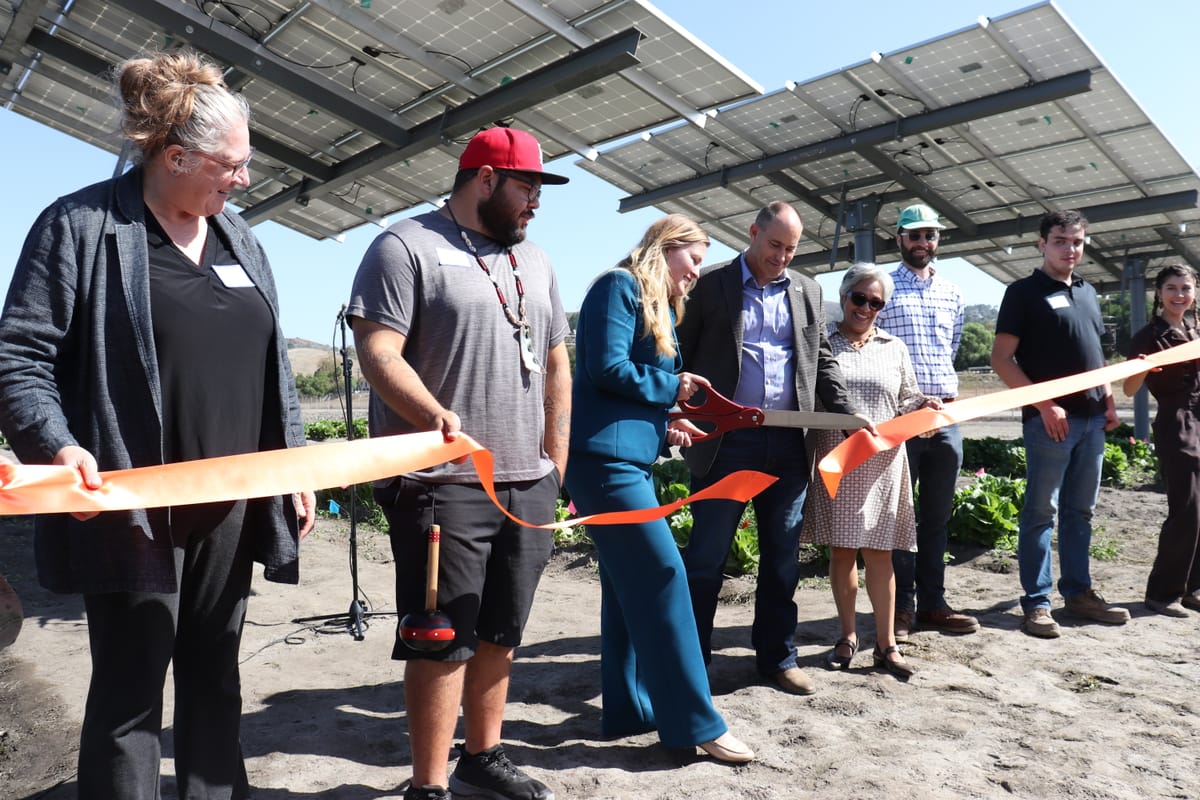Cal Poly Pomona, Pitzer College unveil dual-use site to study future of farming through agrivoltaics

Cal Poly Pomona’s Huntley College of Agriculture and the Robert Redford Conservancy at Pitzer College officially launched one of Southern California’s first agrivoltaic research sites at the polytechnic university’s Spadra Farm, Thursday. The project integrates renewable energy and sustainable agriculture through a dual-use land management approach where crops grow beneath elevated solar panels.
The joint endeavor, supported by a $1.8 million grant from the Foundation for Food and Agriculture Research (FFAR) to Pitzer College, facilitates research into the potential and long-term benefits of agrivoltaic systems across the state.
Agrivoltaics fuses the words “agriculture” and “photovoltaic,” the conversion of light into electricity, together. As a practice, agrivoltaics allows for greater land-use efficiency, as farming and energy production occur on the same plot of land.
For example, the Spadra Farm site, known for its community engagement, crop sales and student-research opportunities, features six solar arrays placed above patches of romaine lettuce, and two 220 pound batteries to store the energy generated.
Virginia Jameson, deputy secretary for climate and working lands at the California Department of Food and Agriculture, delivered the keynote remarks, offering a somber message about the plight of farmers and the promise of new technologies.
“I don't want to sugarcoat things: this is a very tough time for agriculture, both in our state and across the country," Jameson said. “The cost of inputs like fertilizers are high, prices for products are low, and the number of regulations farmers have to comply with are many and increasing.”
Even so, she highlighted innovation as a reason for hope.
“We have championed a number of technologies and systems that were still very much conceptual at the beginning of this millennium,” Jameson noted. “Today, those concepts are fully functioning at scale on real farms all over California. And it was projects like this one that make that possible, proving the workability of the concept and giving us concrete paths for further improvement.”
Susan Phillips, director of the Robert Redford Conservancy, commented on the energy potential of the agrivoltaic installation.
“Our little system can power between around four to six houses per year, depending how much energy they're using,” Phillips said.
She also emphasized the real, tangible benefits of those dual-use approaches already in use.
“Agrivoltaics as a whole is going through this growth spurt nationally: it's more than doubled in the last five years to 62,000 acres producing 10 gigawatts of electricity, which is enough to provide electricity to all the homes in Los Angeles and San Francisco combined.”
Growth like this underscores the need for ongoing analysis, experimentation and implementation.
“Ultimately, our goal with this grant is to empower people to power themselves, to develop micro grids, to grow food at the same time as they're tackling challenges like heat and drought and swollen energy systems and extreme weather,” she said.
Phillips concluded that “our reliance on fossil fuels” is the “root of so many of our problems.”
